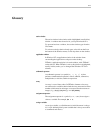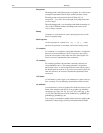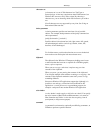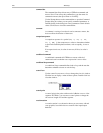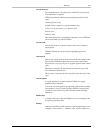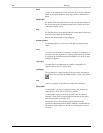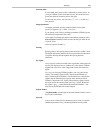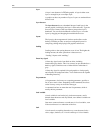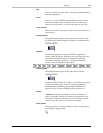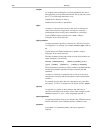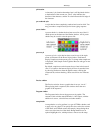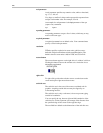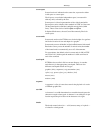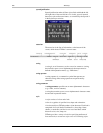
Glossary 223
FXDeko User’s Guide
insertion point
In a text field, the insertion point is indicated by the text cursor. As
you type, FXDeko inserts each character into text at the insertion
point, and shifts the insertion point to the right.
To move the text cursor, use arrow keys (↑ → ↓ ←) or click on a
new position.
integer parameter
An integer parameter specifies a whole number value, either
positive or negative, e.g. 3, 12967, -174, 0, etc.
if you specify a real value for an integer parameter, FXDeko ignores
the fractional component of the value.
An example of an integer parameter is the number parameter of the
select style preset command, which sets the current style from the list
of preset styles:
select style preset (number =)
kerning
Kerning refers to the spacing between the characters within a word.
The higher the kerning amount, the more space between characters.
A negative kerning amount tightens the spacing between
characters.
key signal
A key signal is a black-and-white video signal that, when used with
a keyer, tells the keyer how to combine two video signals. FXDeko
outputs both a full-color video output and a black-and-white key
signal.
Let’s say you’re keying FXDeko graphics over live video from a
camera. You feed the video and key outputs from FXDeko to a
keyer (which could be FXDeko’s own internal keyer), and also the
camera output. Where the key signal is white, the keyer inserts
FXDeko’s output (the “fill” signal). Where the key signal is black,
the keyer inserts the camera output (the “key” signal). Where the
key signal is gray — somewhere between black and white — the
keyer mixes the FXDeko and camera outputs.
keyhole shader
A keyhole shader cuts through all elements behind a detail to show
keyed video on the detail.
keyword
A keyword is a name used in command syntax to refer to a specific
command parameter. Every command parameter has a keyword.



